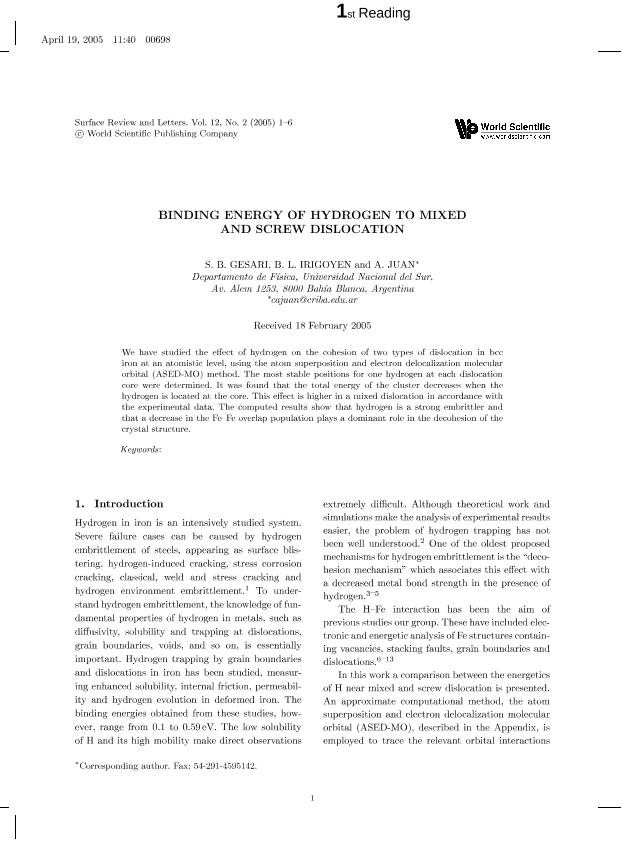Artículo
Binding energy of hydrogen to mixed and screw dislocation
Fecha de publicación:
04/2005
Editorial:
World Scientific
Revista:
Surface Review And Letters
ISSN:
0218-625X
e-ISSN:
1793-6667
Idioma:
Inglés
Tipo de recurso:
Artículo publicado
Clasificación temática:
Resumen
We have studied the effect of hydrogen on the cohesion of two types of dislocation in bcc iron at an atomistic level, using the atom superposition and electron delocalization molecular orbital (ASED-MO) method. The most stable positions for one hydrogen at each dislocation core were determined. It was found that the total energy of the cluster decreases when the hydrogen is located at the core. This effect is higher in a mixed dislocation in accordance with the experimental data. The computed results show that hydrogen is a strong embrittler and that a decrease in the Fe-Fe overlap population plays a dominant role in the decohesion of the crystal structure.
Palabras clave:
Bcc Iron
,
Bonding
,
Electronic Structure
,
Grain Boundary
Archivos asociados
Licencia
Identificadores
Colecciones
Articulos(IFISUR)
Articulos de INSTITUTO DE FISICA DEL SUR
Articulos de INSTITUTO DE FISICA DEL SUR
Citación
Gesari, Susana Beatriz; Irigoyen, Beatriz del Luján; Juan, Alfredo; Binding energy of hydrogen to mixed and screw dislocation; World Scientific; Surface Review And Letters; 12; 2; 4-2005; 227-232
Compartir
Altmétricas




